Abstract
A diagnostic key has been developed which will permit identification of most mycobacteria encountered in clinical laboratories. The key is based on performance of a few simple tests. The efficiency and accuracy of the key was evaluated in terms of correlation between identifications based on the few tests and those arrived at through application of the techniques of numerical taxonomy, which involves a large battery of tests. Of 679 cultures of mycobacteria other than Mycobacterium tuberculosis, 86.5% were correctly identified by use of the key, and only 1.8% of the cultures were erroneously identified. The remaining cultures required further examination.
Full text
PDF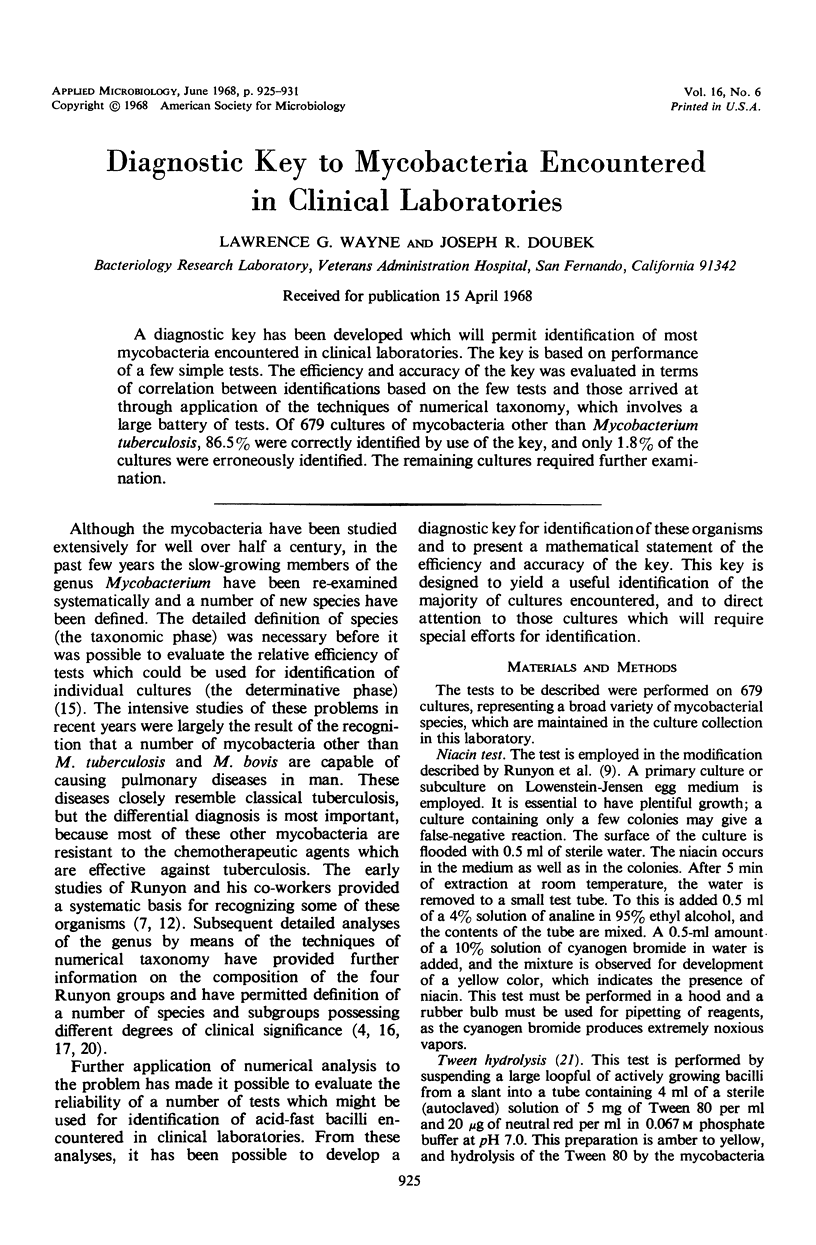
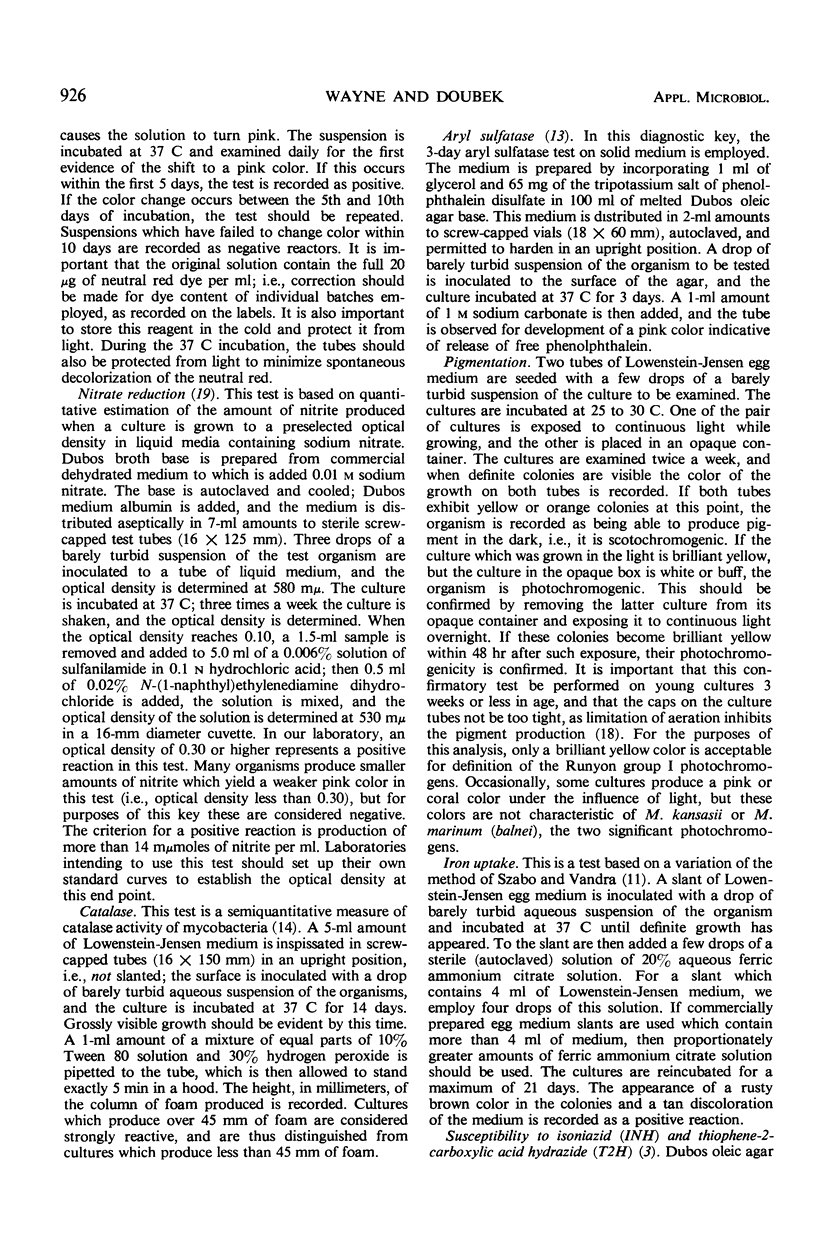
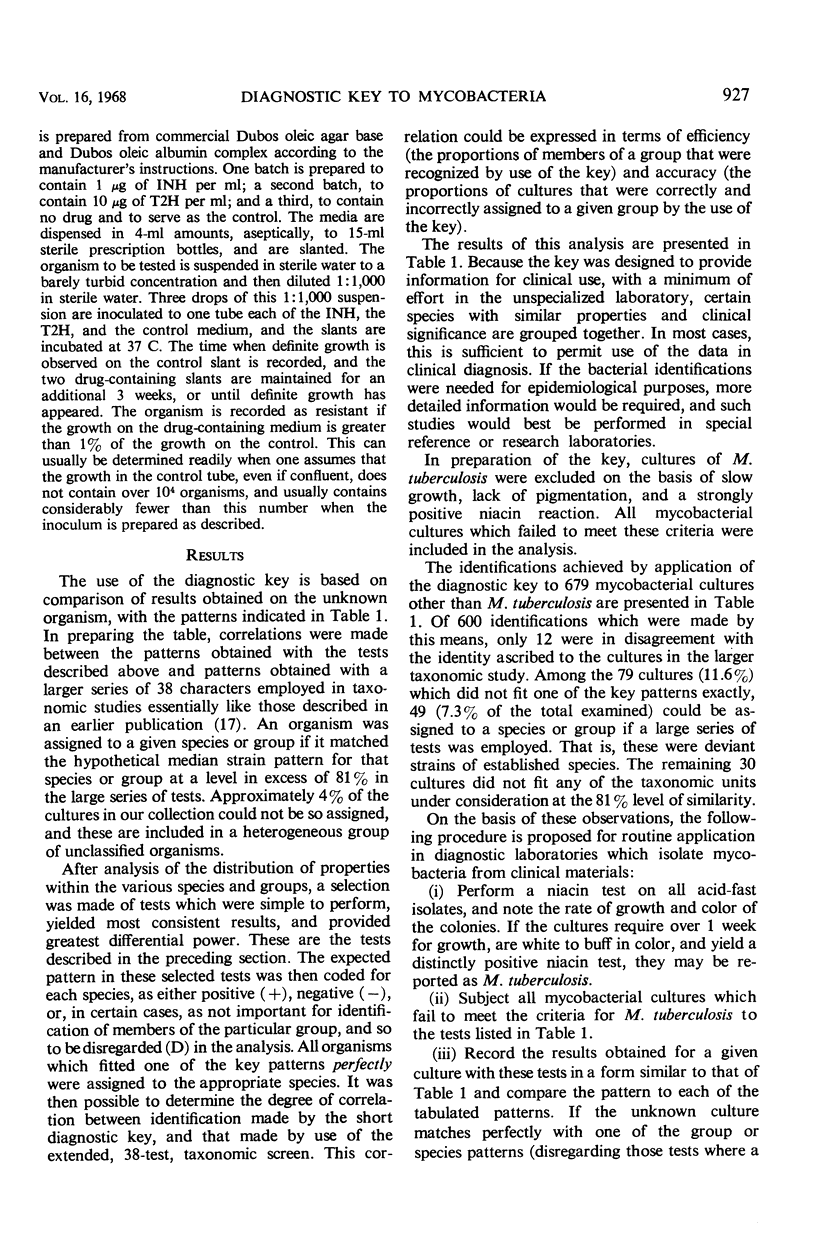
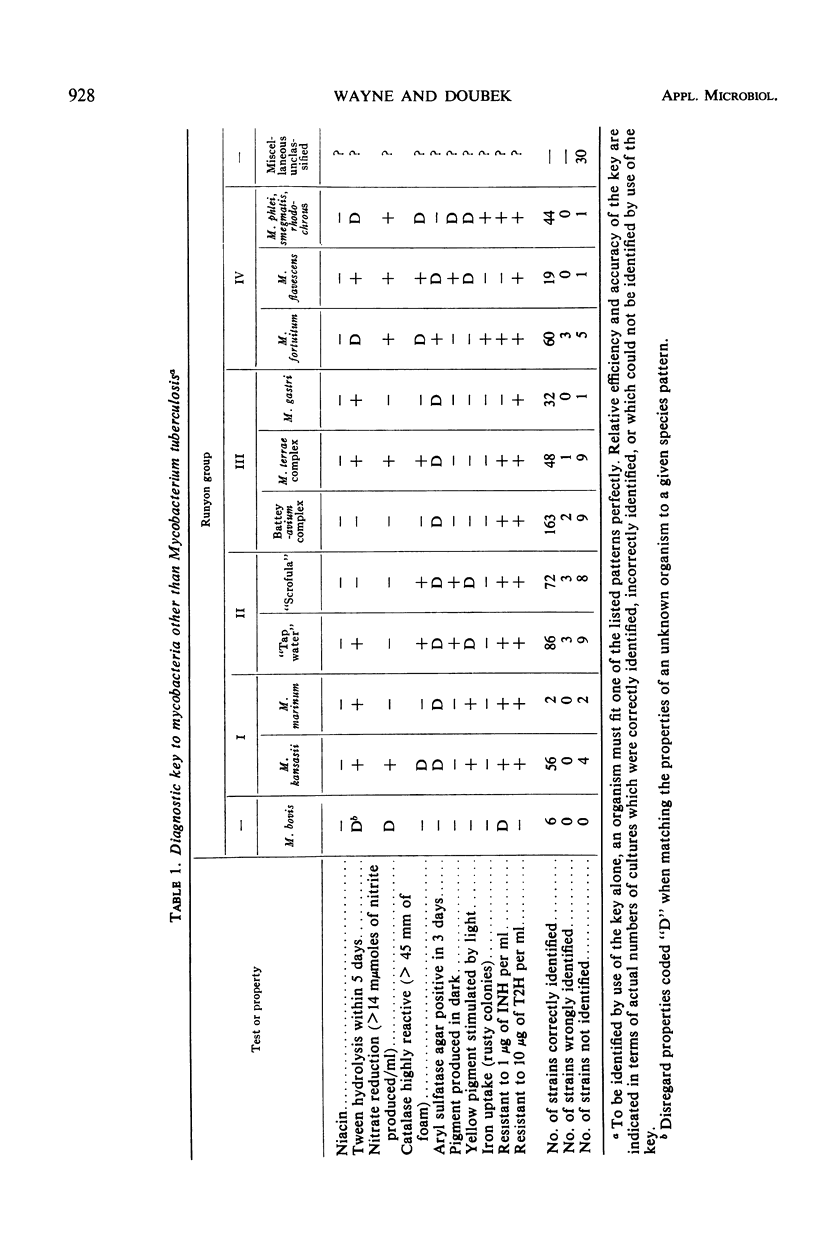
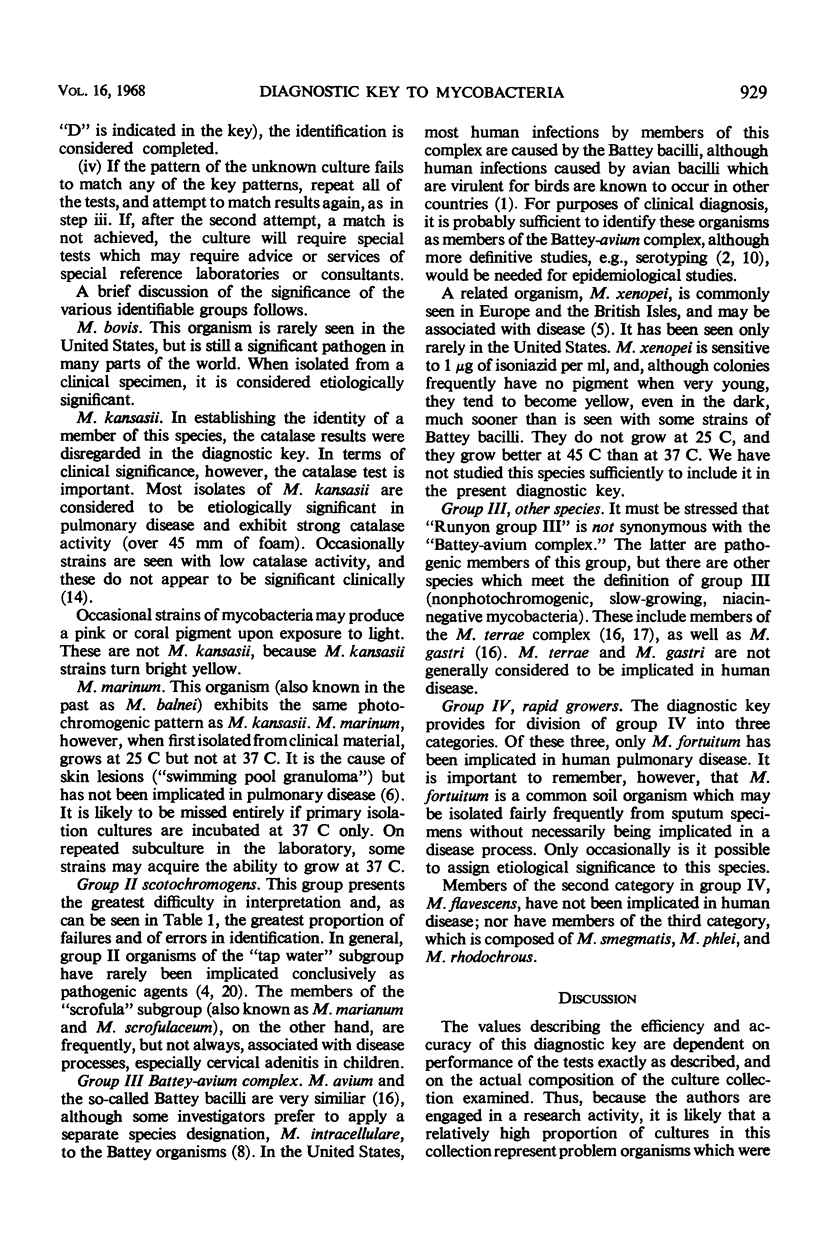
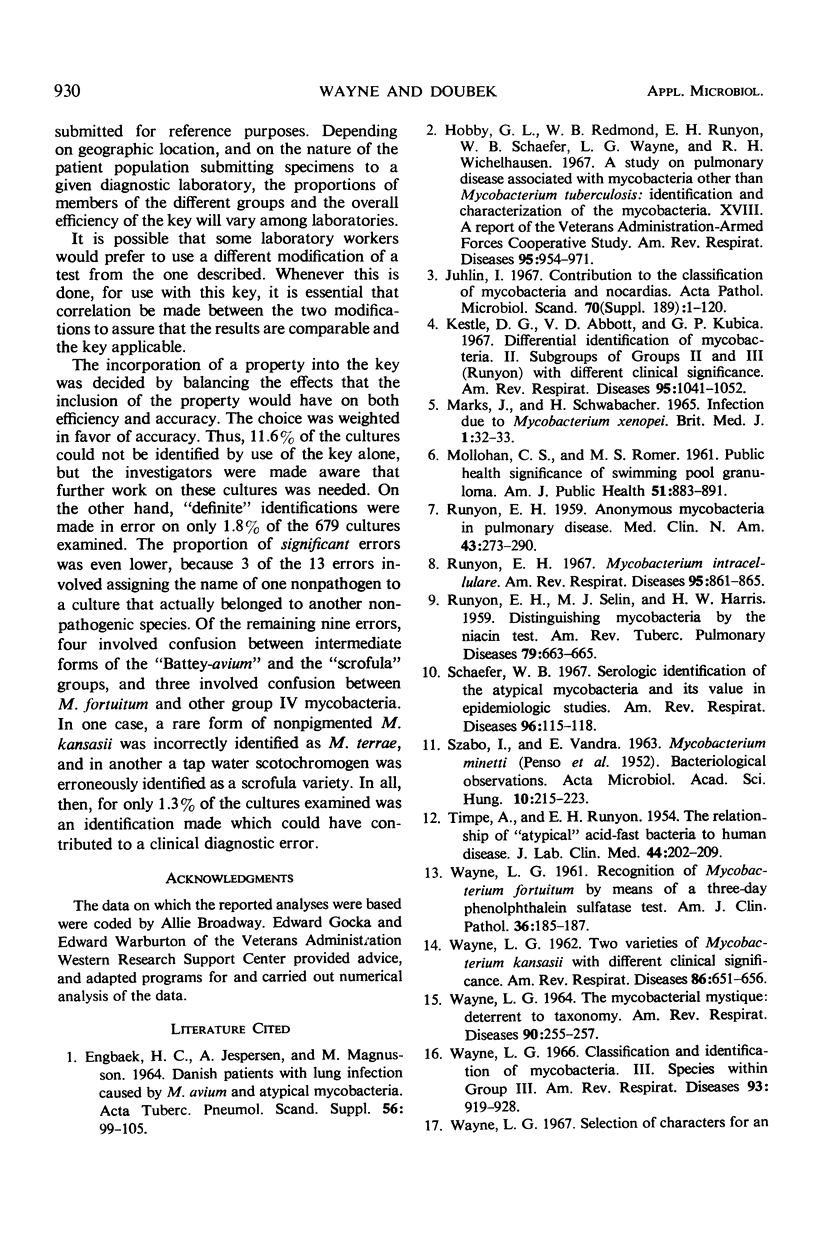
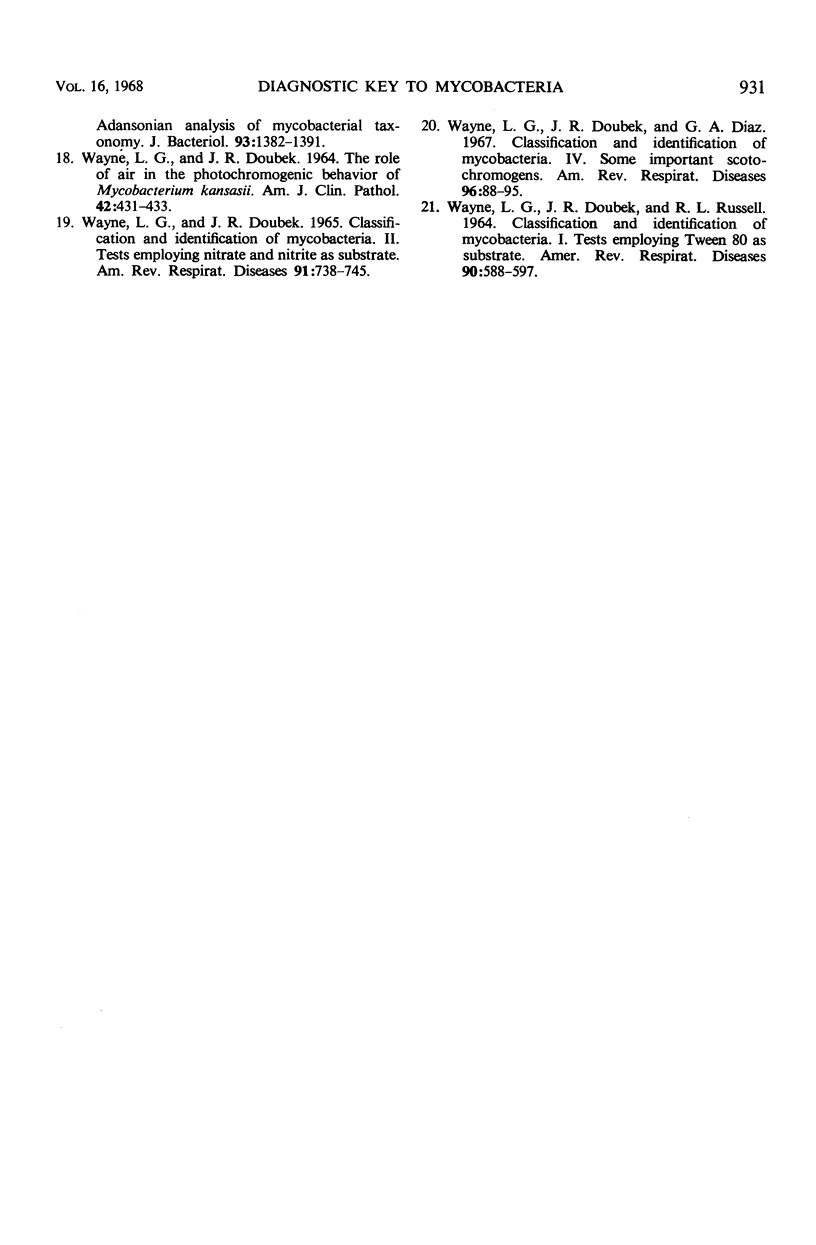
Selected References
These references are in PubMed. This may not be the complete list of references from this article.
- ENGBAEK H. C., JESPERSEN A., MAGNUSSON M. DANISH PATIENTS WITH LUNG INFECTIONS CAUSED BY M. AVIUM AND ATYPICAL MYCOBACTERIA. Acta Tuberc Pneumol Scand Suppl. 1964;56:SUPPL 56–56:99+. [PubMed] [Google Scholar]
- Hobby G. L., Redmond W. B., Runyon E. H., Schaefer W. B., Wayne L. G., Wichelhausen R. H. A study on pulmonary disease associated with mycobacteria other than Mycobacterium tuberculosis: identification and characterization of the mycobacteria. 18. A report of the Veterans Administration-Armed Forces Cooperative Study. Am Rev Respir Dis. 1967 Jun;95(6):954–971. doi: 10.1164/arrd.1967.95.6.954. [DOI] [PubMed] [Google Scholar]
- Juhlin I. Contribution to the classification of mycobacteria and nocardias. Acta Pathol Microbiol Scand. 1967;70(Suppl):1+–1+. [PubMed] [Google Scholar]
- Kestle D. G., Abbott V. D., Kubica G. P. Differential identification of mycobacteria. II. Subgroups of Groups II and 3 (Runyon) with different clinical significance. Am Rev Respir Dis. 1967 Jun;95(6):1041–1052. doi: 10.1164/arrd.1967.95.6.1041. [DOI] [PubMed] [Google Scholar]
- MARKS J., SCHWABACHER H. INFECTION DUE TO MYCOBACTERIUM XENOPEI. Br Med J. 1965 Jan 2;1(5426):32–33. doi: 10.1136/bmj.1.5426.32. [DOI] [PMC free article] [PubMed] [Google Scholar]
- MOLLOHAN C. S., ROMER M. S. Public health significance of swimming pool granuloma. Am J Public Health Nations Health. 1961 Jun;51:883–891. doi: 10.2105/ajph.51.6.883. [DOI] [PMC free article] [PubMed] [Google Scholar]
- RUNYON E. H. Anonymous mycobacteria in pulmonary disease. Med Clin North Am. 1959 Jan;43(1):273–290. doi: 10.1016/s0025-7125(16)34193-1. [DOI] [PubMed] [Google Scholar]
- RUNYON E. H., SELIN M. J., HARRIS H. W. Distinguishing mycobacteria by the niacin test; a modified procedure. Am Rev Tuberc. 1959 May;79(5):663–665. doi: 10.1164/artpd.1959.79.5.663. [DOI] [PubMed] [Google Scholar]
- Runyon E. H. Micobacterium intracellulare. Am Rev Respir Dis. 1967 May;95(5):861–865. doi: 10.1164/arrd.1967.95.5.861. [DOI] [PubMed] [Google Scholar]
- SZABO I., VANDRA E. MYCOBACTERIUM MINETTI (PENSO ET AL. 1952). BACTERIOLOGICAL AND EPIDEMIOLOGICAL OBSERVATIONS. Acta Microbiol Acad Sci Hung. 1963;10:215–223. [PubMed] [Google Scholar]
- Schaefer W. B. Serologic identification of the atypical mycobacteria and its value in epidemiologic studies. Am Rev Respir Dis. 1967 Jul;96(1):115–118. doi: 10.1164/arrd.1967.96.1.115. [DOI] [PubMed] [Google Scholar]
- TIMPE A., RUNYON E. H. The relationship of atypical acid-fast bacteria to human disease; a preliminary report. J Lab Clin Med. 1954 Aug;44(2):202–209. [PubMed] [Google Scholar]
- WAYNE L. G., DOUBEK J. R. CLASSIFICATION AND IDENTIFICATION OF MYCOBACTERIA. II. TESTS EMPLOYING NITRATE AND NITRITE AS SUBSTRATE. Am Rev Respir Dis. 1965 May;91:738–745. doi: 10.1164/arrd.1965.91.5.738. [DOI] [PubMed] [Google Scholar]
- WAYNE L. G., DOUBEK J. R., RUSSELL R. L. CLASSIFICATION AND IDENTIFICATION OF MYCOBACTERIA. I. TESTS EMPLOYING TWEEN 80 AS SUBSTRATE. Am Rev Respir Dis. 1964 Oct;90:588–597. doi: 10.1164/arrd.1964.90.4.588. [DOI] [PubMed] [Google Scholar]
- WAYNE L. G. THE MYCOBACTERIAL MYSTIQUE: DETERRENT TO TAXONOMY. Am Rev Respir Dis. 1964 Aug;90:255–257. doi: 10.1164/arrd.1964.90.2.255. [DOI] [PubMed] [Google Scholar]
- WAYNE L. G. Two varieties of Mycobacterium kansasii with different clinical significance. Am Rev Respir Dis. 1962 Nov;86:651–656. doi: 10.1164/arrd.1962.86.5.651. [DOI] [PubMed] [Google Scholar]
- Wayne L. G. Classification and identification of mycobacteria. 3. Species within group 3. Am Rev Respir Dis. 1966 Jun;93(6):919–928. doi: 10.1164/arrd.1966.93.6.919. [DOI] [PubMed] [Google Scholar]
- Wayne L. G., Doubek J. R., Diaz G. A. Classification and indentification of mycobacteria. IV. Some important scotochromogens. Am Rev Respir Dis. 1967 Jul;96(1):88–95. doi: 10.1164/arrd.1967.96.1.88. [DOI] [PubMed] [Google Scholar]
- Wayne L. G. Selection of characters for an Adansonian analysis of mycobacterial taxonomy. J Bacteriol. 1967 Apr;93(4):1382–1391. doi: 10.1128/jb.93.4.1382-1391.1967. [DOI] [PMC free article] [PubMed] [Google Scholar]


